German agents, traitors, confidants - hunting them was the main form of activity of the Home Army and its elite groups:executors. Only from the beginning of 1943 to mid-1944, they liquidated over two thousand Poles. Often with really cowboy bravado.
Theoretically, the executions were dressed in strictly developed regulations. It stands in black and white in the training materials:
If branch two sends a sentence for execution, it gives very exact data, but the executive branch commander still checks the data. There must be absolute certainty as to the identity of the sentenced person, the so-called typing / description, the sentenced day mode is performed by liaison officers by observation throughout the day for a shift, one 2 hour.
The commander chooses the most suitable place with the least risk to the people. The sentence must be successful the first time otherwise we will scare the condemned man away. There must be an officer in the execution of the sentence. It should also be possible to examine the convict, who dragged him into G-po, whom he poured in, etc. It is best to execute the sentence in an apartment or in an office.
Block the phone by calling an apartment or office that is being attacked by some other number. Usually, six people (volunteers) are required for the sentence:one ensures that the gate is closed, the third enters the apartment, the two bravest people with sprays insure them on the street.
A report must be submitted after the judgment. Withdrawal, if the action is successful, through empty streets to see if some accidental German witness is following us and making a bet. If the action is unsuccessful and so we are exposed, on the contrary, we should pass through the most crowded streets .
When the plan fails
In practice, however, it was difficult to strictly adhere to the regulation scheme and the final execution plan was decided by the unit commander, often improvising under the influence of the course of events ... or a sudden rush of adrenaline.
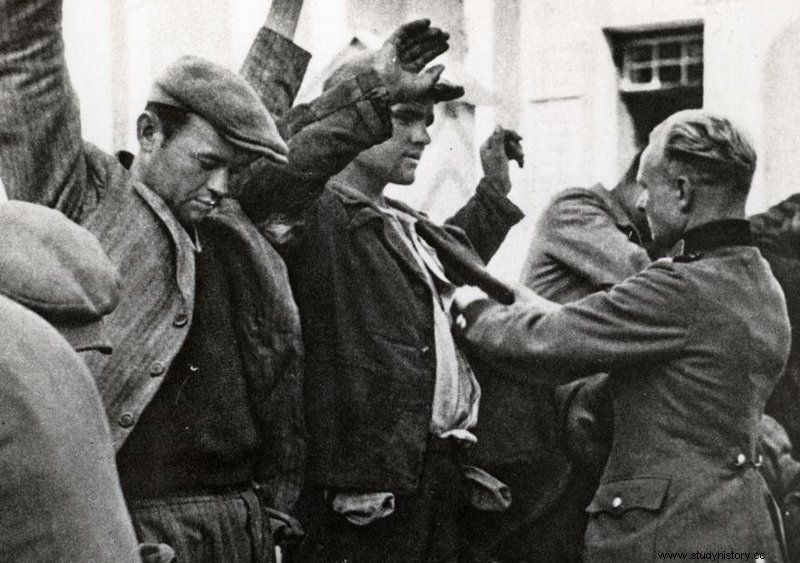
The head of the Kripo at the 15th police station in Warsaw, Feliks Haller, was a notorious sadist who enjoyed tortured people caught in round-ups. Its liquidation fell on the Bąkom brothers. In the photo, Warsaw residents arrested during one of the numerous round-ups (source:public domain).
Bolesław Bąk "Szlak" - one of the four brothers, members of the 993 / W unit specialized in liquidations, recalled, for example, the execution of the sentence on Feliks Haller, the head of the Kripo at the 15th police station. He was an obsessive Pole-eater and possibly a sadist - on his own initiative he organized round-ups in the Warsaw district of Grochów, tortured the captured with his own hand and then sent to work in Germany.
After a few days of observation, it was established that he lived at ul. Majdańska in the same Grochów. However, the matter was still not simple. Sadist or not, Haller was an intelligent and hellishly seasoned policeman:he took a different route to the bus stop every day, and he kept his hand on the pistol hidden in his pocket the whole time being on the street.
There was no way out. On August 5, 1943, around 7 a.m., a four-man patrol consisting mostly of the Bąki brothers split up and each of the liquidators took their place on one of Haller's probable routes. There was no plan - it was just the one who came across the policeman that was supposed to shoot .
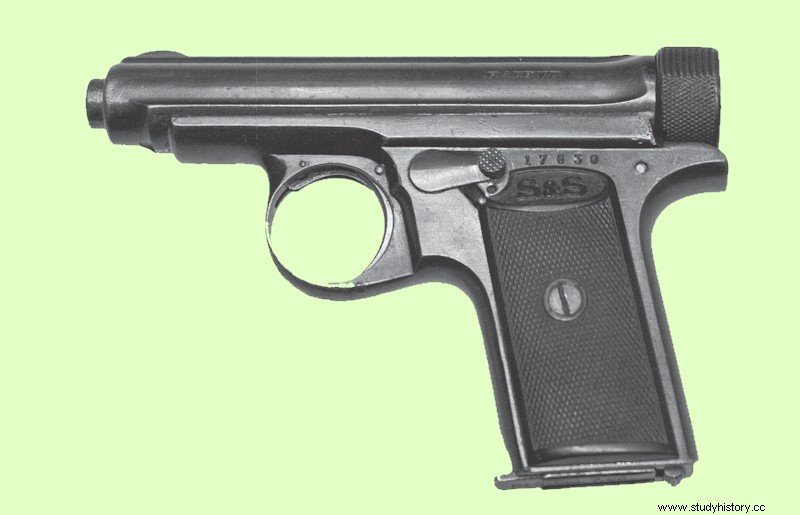
Sauer M1913 pistol - a typical weapon used, among others for the enforcement of judgments issued by the courts of the Polish Underground State. The photo and the caption come from the "Great Book of the Home Army".
The choice was Leon Bąk "Doktur". "The doctor saves lives, but I do," - he liked to explain the orthographic inaccuracy of his pseudonym. At the last moment, improvising, he decided to use a trick:pretending to be a drunkard, he approached Haller with a cigarette in his hand and mumbled for a fire.
Haller had to take his hand off the gun because of that, and when he gave Doc the fire, the Doctor burned him in the stomach, and then ... his gun jammed . "Szlak" reports on what happened next:
Hearing no more shots, I ran towards Doc, who was already heading towards me saying: - Boleczek, finish it! My gun is jammed! I quickly ran to Heller, and Heller croaked at the sight of me with contorted pain in his face:- Save, I'm from the police ... - And I am from the ZWZ - I replied, shooting the entire clip of the visa in the head of the torturer.
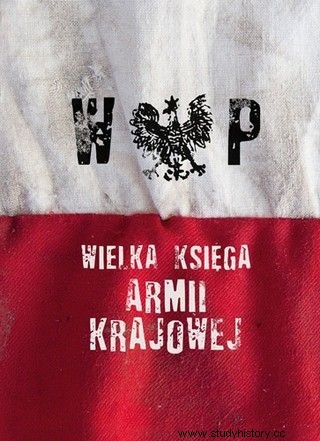
You can learn even more about the actions of the Home Army executors from the chapter by Wojciech Lady in the "Wielka Księga Armii Krajowej" (Znak Horyzont 2015). You will also find texts by other journalists of "Historical Curiosities".
Deadly bravado
Incidentally, you could count on "Szlaka" - he repeatedly went mad in his bravado. And since he was extremely physically fit and had a lot of luck, his attacks usually trumped the boldest Hollywood scenarios .
One day, for example, he was to execute a sentence on a certain Lesz in the "Kolorowa" confectionery at pl. Of the Three Crosses. The person who was supposed to tell him the target did not appear, however, so the "Trail", guided by instinct, followed the figure he thought most suspicious of.
On ul. Marszałkowska, the victim and her executioner boarded the crowded tram. "Trail", without thinking much, climbed the back of the armchair and , holding the ceiling with one hand, fired at Lesz over the heads of the passengers . While escaping, he managed to shoot at two German airmen who were trying to stop him.
Regulations? What rules?
In the bizarre execution of the sentence, no one has beaten "The Electrician". His real name was Bolesław Ostrowski and he served as a professional officer in the 21st Uhlan Regiment. He fought with him during the September campaign and was severely injured in the leg.
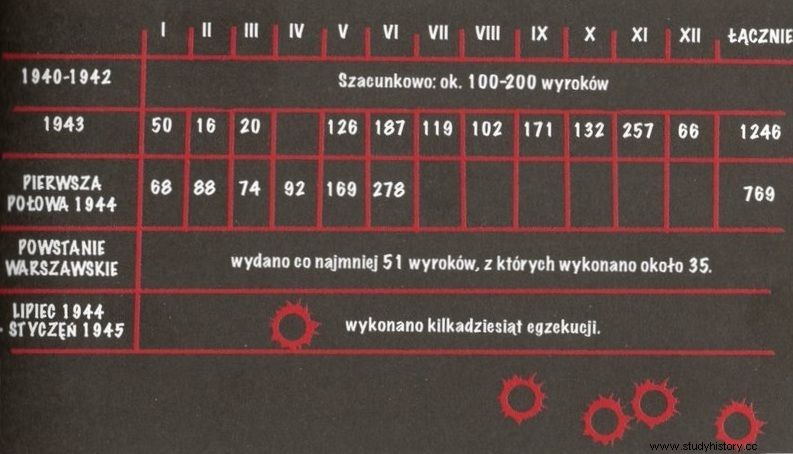
Number of Poles liquidated during the war under the judgments of the underground courts of the Home Army. The infographic comes from the "Great Book of the Home Army" (Znak Horyzont 2015). Click to enlarge.
Despite his disability, he was a very active and skillful soldier. It was him who was commissioned to kill Fritz Geist - an employee of the Arbeitsamt, a specialist in the field of Polish youth, whom he sent with great enthusiasm in bulk to the Reich. As Aleksander Kunicki reports:
It was May 10, 1943. In the morning, but not too early, probably around ten o'clock, our men took the observation posts near the Arbeitsamt, waiting to see the Geist exiting. The battle group was deployed on ul. Mazowiecka.
( ... ) He left the building just before one o'clock. (… ) was not accompanied by a secretary, but by a Gestapo officer assigned to security . Also in civilian clothes.
After leaving the building they headed (... ) - towards Mazowiecka. They were walking fast. When they found themselves in front of the store of the well-known company Phillips, which was located there before the war, an extraordinary thing happened.
"Electrician" (... ) did not take out the pistol and fire but driven by some overwhelming passion, ran across the road - because he was standing on the sidewalk on the opposite side - and with his bare hands attacked the German . Although, as I mentioned, he had a stiff leg, he did it so quickly that the others did not have time to figure out what he meant. The Electrician caught up with Geist and started choking him .
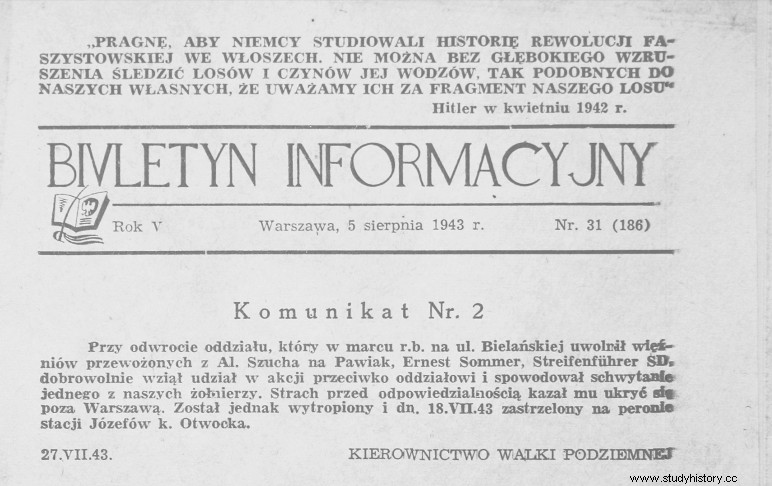
Another information about the successful action of the liquidators of the Home Army published in the "Information Bulletin" of August 5, 1943. This time about the shooting of SD member Ernest Sommer. The photo comes from the "Great Book of the Home Army" (Znak Horyzont 2015).
The situation was so peculiar that for the first seconds, everyone stood as if built up. Except, of course, "Elektryka", who tightened his hands tightly around his victim's neck, and Geist, who managed to pull out a pistol and shoot several times in the air. At this sound, the Home Army soldiers and the Gestapo agent woke up from their stupor at the same time. Now things happened in a flash:
"Lombroso", who insured the "Electrician" who was to execute the sentence and was therefore closest to him, pulled out a pistol. It was done almost at the same time by a Gestapo officer who had already recovered. But "Lamroso" was a fraction of a second faster and a Gestapo man who was fatally stabbed fell like a long time onto the sidewalk.
At the sound of the shots, the street was deserted, the rest of the team took out their weapons and insured the action on both sides (... ) . The other two continued to struggle, but the matter was already a decision. Lombroso fired again, Geist got some shots.
There was a quick retreat. "Lomroso" and "Elektryk" retreated by rickshaw, the others were on their own feet. Geist, although he was given several bullets, each of which should have killed him on the spot, still managed to hold out for a few more days. He died in the hospital .
